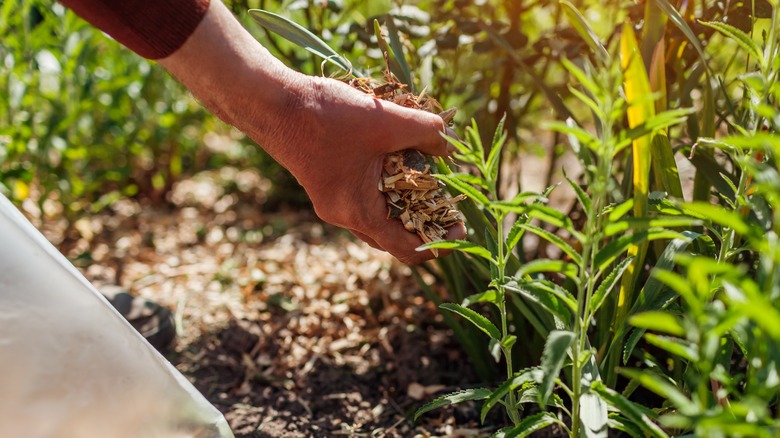Barnyardgrass (Echinochloa crus-galli) is a persistent weed that can quickly overtake yards, gardens, and crops. It features long, flat leaves and produces numerous slightly-purplish blooms during the warm season in June to October. The seeds produced are prolific and spread easily on equipment and shoes. Although this may not be the most common weed to find in your lawn, it is resilient, fast-growing, and invasive. Once this weed has established itself in your yard, using herbicides responsibly is the most effective way to control an infestation.
This weed is highly-adaptable to different soil types and moisture levels, making it challenging to control in various horticultural settings. It can tolerate wet conditions as well as periods of drought and can also persist in partial shade, though it thrives in full sunlight. As with many weeds, its rapid growth rate and high seed yield make barnyardgrass a particularly-destructive species to gardens and lawns if left unmanaged. Along with chemical treatments, adopting preventative measures and sound gardening practices will ensure that it is kept out of your outdoor space for good.
The best way to prevent an infestation of barnyardgrass

If your garden is overrun with barnyardgrass or you want to prevent this weed’s growth, chemical controls are the most effective option. There are various types of weed killer available, and the type you should use depends on the weed and the surrounding vegetation. For lawns, make sure to choose a selective herbicide, as a non-selective option will kill the lawn, too. Further, for edible crops, consider that most herbicides will not be suitable here. If you want to prevent growth, you’ll need to apply specific preemergence herbicides that contain prodiamine, pendimethalin, or dithiopyr before soil temperatures exceed 62 degrees Fahrenheit in the spring. On the other hand, if you’ve already noticed this weed growing on your property, you’ll need to use products that contain fenoxaprop-p-ethyl, quinclorac, or topramezone.
However, herbicides must be used responsibly to avoid damage to the ecosystem or neighboring plants. Avoid spraying herbicides on a windy day when there is the risk of spreading chemicals to close-by vegetation. Equally, applying herbicides on a rainy day can cause the chemicals to run off into nearby streams or rivers. Take care to always read the instructions on the packaging thoroughly — only use as much as recommended to prevent excess chemicals accumulating in the soil or spreading. If using non-selective herbicides, be sure to spot apply directly to the weeds and protect neighboring plants with sheets or buckets if necessary.
Cultural practices to keep barnyardgrass at bay

While herbicides are the most effective, cultural controls encompass a range of gardening practices that kill or restrict the growth of weeds without using chemicals. These are ongoing measures that maintain the health and balance of your garden in a way that is sustainable and may be your ideal choice. For barnyardgrass in flower beds or vegetable plots, watering the plants directly can help minimize weed growth between plants. Correct plant spacing can help to shade areas to suppress weed growth, while cover crops such as buckwheat can help to outcompete weeds. Applying mulch — such as wood chips, bark, straw, or pebbles — will also help suppress weed growth while providing moisture retention and insulation for your garden bed. To choose the best type of mulch for your garden, consider your landscape design as well as the specific nutrition needs, watering requirements, and pest threats of your plants.
Limited amounts of barnyardgrass in your lawn can be removed carefully by hand or with a shovel. Additionally, keeping your lawn short can help to prevent this weed from seeding. Although mowing can propagate and spread many common garden weeds, barnyardgrass will be unable to reproduce when mowed to a height of fewer than 3 inches. It is important to mow frequently to prevent seed heads from forming. Maintaining the health of your lawn with a regular fertilizing schedule can also help to create thick growth that can crowd out barnyardgrass.
